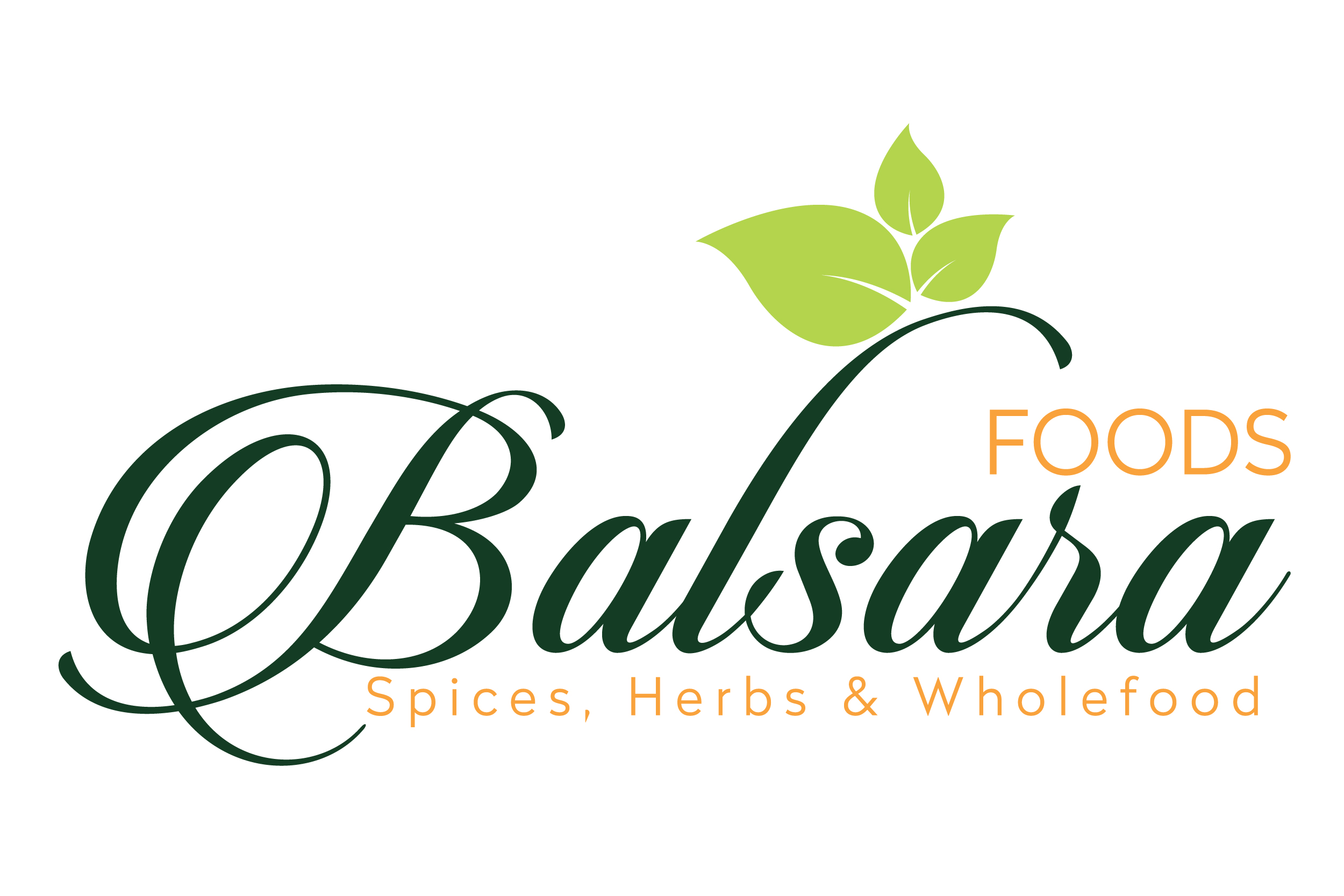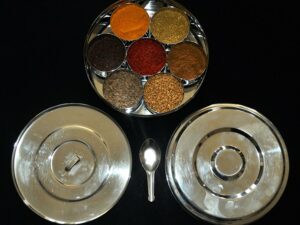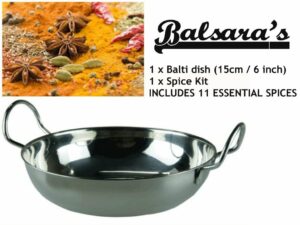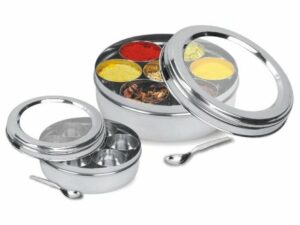Description
Spices Curry Kit You will receive 15 Spices
- You will recieve 15 spices x 50g and free sugar coated fennel seeds
- Comes in a clear sealed bag, to retain its freshness (look at image for the packing refrence)
- Packed in Vegeterian atmosphere company
- Quality Asian Herbs and Spices
- Used in many Cooking dishes
YOUR 15 ESSENTIAL SPICE KIT*** 50g – Spices Includes:***
Spices Curry Kit
—Medium Chilli Powder
— Turmeric Powder
— Garam Masala— (A typical Indian version of garam masala is black & white peppercorns, cloves, Cinnamon, mace blades, black & white cumin seeds, black, brown & green cardamom pods, nutmeg, star anise,coriander seeds)
—Whole Black Pepper
— White Pepper Powder
— Madras Curry Powder
— Coriander Powder
— Cumin Powder
— Fenugreek Seeds
— Dried Whole Long Chilli
— Fennel seeds
— Fenugreek seeds
— Hot Paprika Powder
— Coriander seeds
— Ginger powder
— Free Sugar Coated Fennel Seeds
— There are freshly ground spices and they are packed in clear sealed bags
About Spice Kits
There’s no denying Indian cuisine is aromatic and delicious. But what many people don’t know is the tremendous regional diversity that forms the base of Indian food. A result of 5000 years of history and cultural influences, this diversity means there is no one dish that truly represents Indian cuisine. Not even the ubiquitous butter chicken. While you do see proof of this dish’s popularity with its inclusion in “international menus” everywhere, it is still not a true representation of Indian food. Not even close.
There is no better way to showcase India’s rich culture than through its cuisine. The diversity of cooking techniques, the ingredients and preparations add a richness to Indian food. A good example of this variety is the humble chicken curry.
Every home has its own version. Even the recipe I learnt from my mother is different from many others that I’ve tasted over the years. The more traditional red-hued recipe from North India uses onions, tomatoes, garlic and ginger. In Southern India, the same curry is white through the use of coconut milk and the flavour is different with the liberal use of cardamom and pepper. In contrast, in the Western states of India, the spices are muted through the use of sugar (usually jaggery). Eastern India is geographically and culturally close to Tibet, and that difference is reflected in the way they make their chicken curry. It is totally different in taste and is served with rice noodles.
The diversity of Indian cuisine is part of its charm. But the fabric that holds all regional cuisines together are the spices. In every home, in every dish, people use their own combination of spices to add flavour and aroma to even the most mundane of foods. Plain naan is oomphed up with garlic and toasted black sesame seeds, simple daal is finished with a tempering (tadka) of curry leaves, chilli peppers and cumin seeds. Mundane to marvellous in a sprinkle.
At home in Canada, spices are inherent to my everyday cooking much like my mom in her kitchen in India. Routine weeknight dinners come to life with roasted spices, and because many spices and herbs are also natural remedies for boosting our overall health, their use adds to the nutritional value of the food.
I cook every day and the dishes are influenced by my memories and experiences and knowledge, from our lives in India to Canada and places in between. Here is my list of essential Indian spices that you need in your pantry; listed alphabetically in no particular order of fondness.





Reviews
There are no reviews yet.